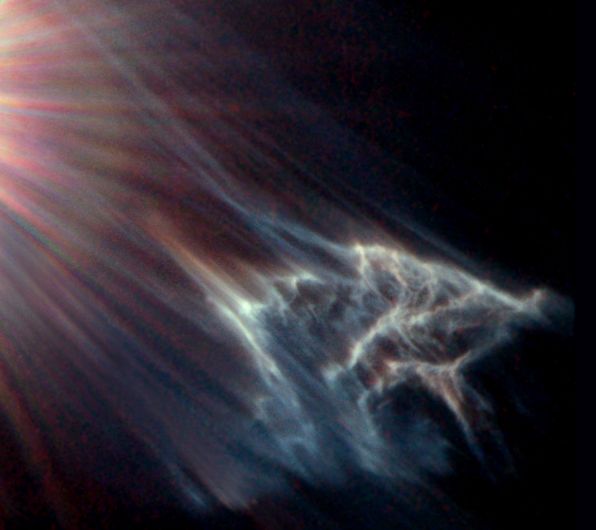Explanation: (xxxedit and linkxxx) In the well known Pleiades star cluster, starlight is slowly destroying this wandering cloud of gas and dust. The star Merope lies just off the upper left edge of this picture from the Hubble Space Telescope. In the past 100,000 years, part of the cloud has by chance moved so close to this star - only 3,500 times the Earth-Sun distance - that the starlight itself is having a very dramatic effect. Pressure of the star's light significantly repels the dust in the reflection nebula, and smaller dust particles are repelled more strongly. As a result, parts of the dust cloud have become stratified, pointing toward Merope. The closest particles are the most massive and the least affected by the radiation pressure. A longer-term result will be the general destruction of the dust by the energetic starlight.
1999 2000 2001 2002 2003 2004 2005 2006 2007 2008 2009 2010 2011 2012 2013 2014 2015 2016 2017 2018 2019 2020 2021 2022 2023 2024 2025 |
Yanvar' Fevral' Mart Aprel' Mai Iyun' Iyul' Avgust Sentyabr' Oktyabr' Noyabr' Dekabr' |
NASA Web Site Statements, Warnings, and Disclaimers
NASA Official: Jay Norris. Specific rights apply.
A service of: LHEA at NASA / GSFC
& Michigan Tech. U.
|
Publikacii s klyuchevymi slovami:
pleiades - reflection nebula - Merope - Pleyady - otrazhatel'nye tumannosti - pylevoe oblako - Pylevaya tumannost'
Publikacii so slovami: pleiades - reflection nebula - Merope - Pleyady - otrazhatel'nye tumannosti - pylevoe oblako - Pylevaya tumannost' | |
Sm. takzhe:
Vse publikacii na tu zhe temu >> | |
